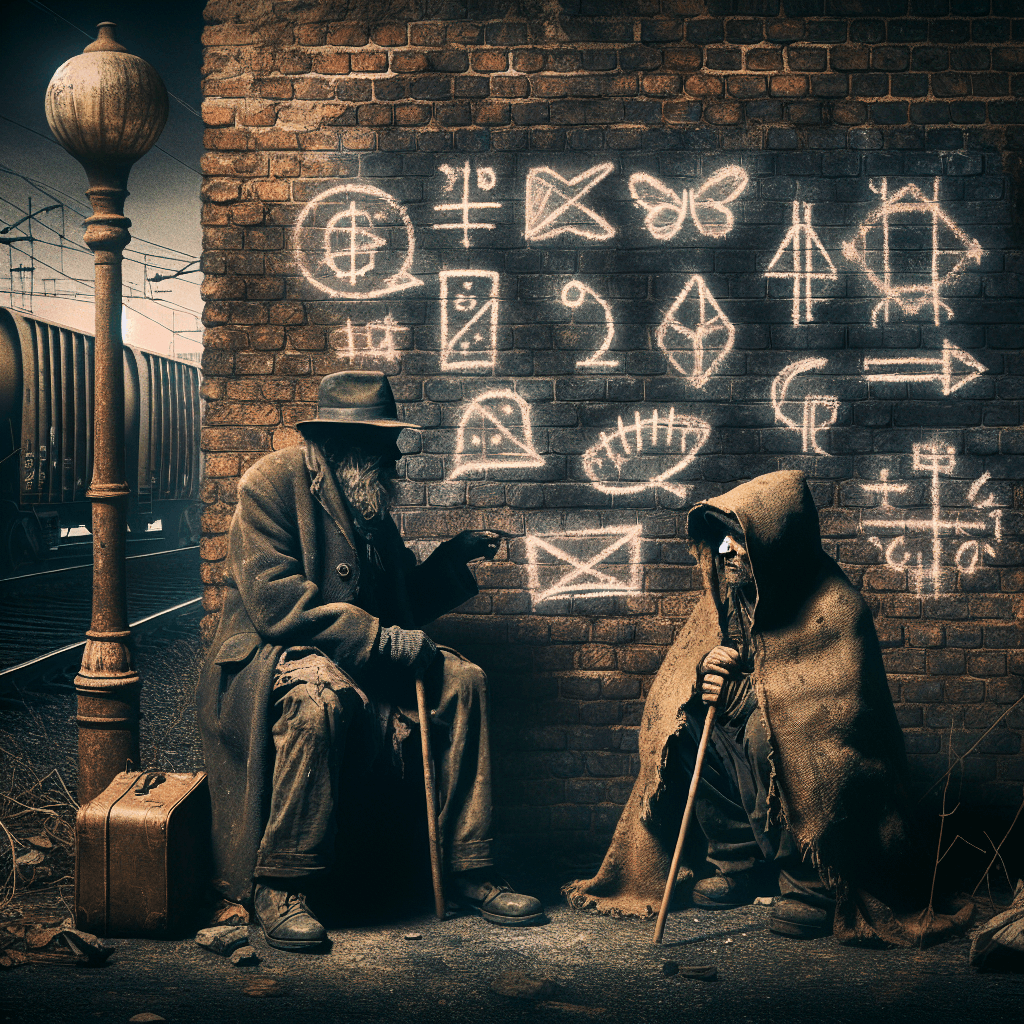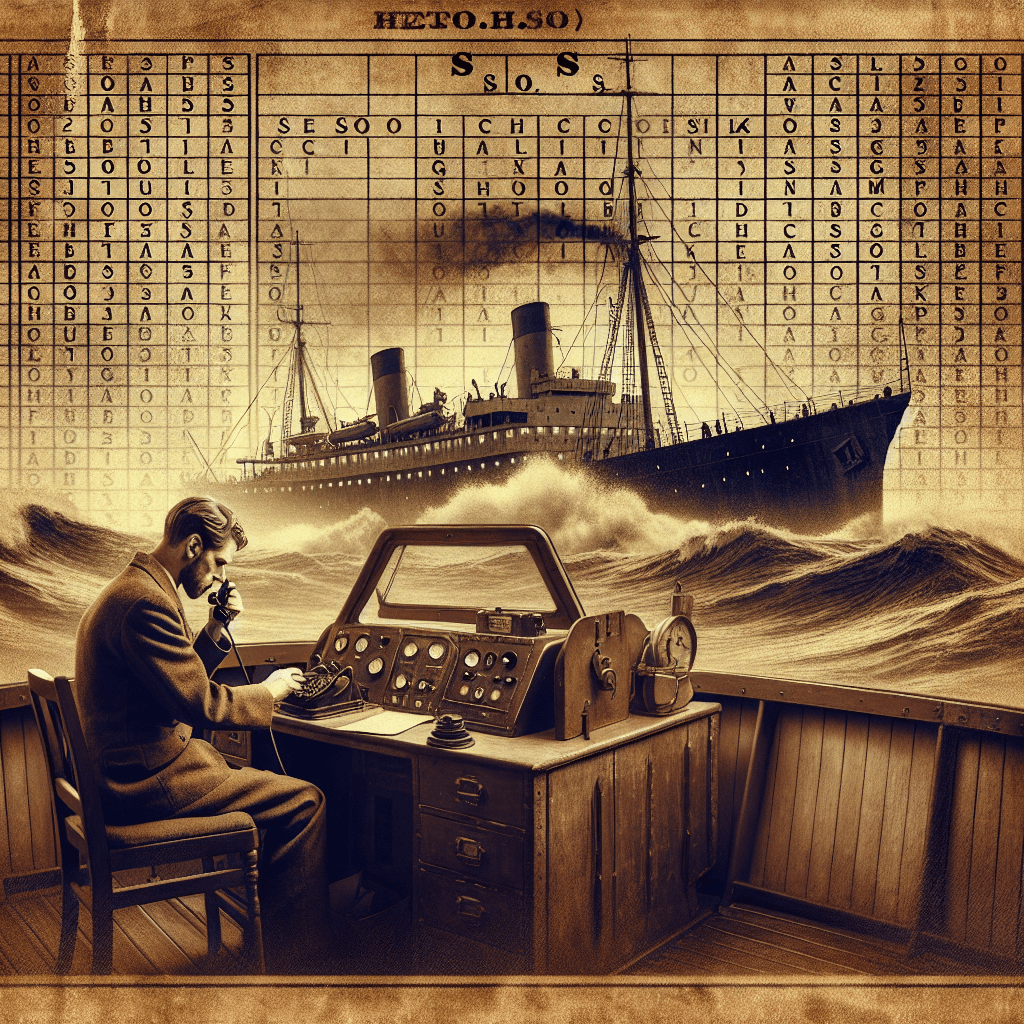Why did hobos develop a secret code of chalk symbols to communicate with each other
For America's wandering hobos, a simple chalk mark wasn't just graffiti—it was a silent, life-or-death code that meant the difference between a warm meal and a dangerous town.


Too Long; Didn't Read
TLDR: Hobos used a secret chalk code to share essential survival information with each other. The symbols silently communicated on-the-ground intelligence, warning of dangers like hostile police or unfriendly homeowners, and pointing towards resources like safe places to camp, a free meal, or potential work. It was a crucial, non-verbal network for navigating unfamiliar towns safely.
The Silent Language of the Rails: Why Did Hobos Develop a Secret Code of Chalk Symbols?
Imagine you’re a traveler in a strange town during the height of the Great Depression. Work is scarce, resources are scarcer, and a wrong turn could lead to a hostile homeowner, a vicious dog, or a run-in with an unforgiving railroad bull. How do you know which farmhouse will offer a meal for a bit of work and which will turn you away? For the American hobo, the answer was often scrawled in chalk on a fence post or a water tower: a secret symbol, part of a complex visual language. This was the hobo code. But this wasn't mere graffiti; it was a critical tool for survival. This post delves into why this clandestine system of symbols was developed, exploring how it became a lifeline of information, safety, and community for America's migratory workers.
A Language Born from Necessity
The hobo tradition began in the years following the American Civil War, but it swelled to its peak during the Great Depression of the 1930s. A hobo was distinct from a tramp or a bum; they were itinerant workers who traveled, often by "riding the rails," in search of employment. This life was fraught with peril. To navigate this dangerous and uncertain world, hobos needed a way to share vital, time-sensitive information with those who would follow the same path. The hobo code, also known as the "signs of the road," was the ingenious solution.
The primary driver behind the code was survival. It was a highly practical system designed to convey complex messages quickly and discreetly. Using common materials like chalk or coal, a hobo could leave a message that was unnoticeable to the general public but crystal clear to a fellow traveler.
The Core Functions of the Code
The symbols served several crucial purposes, all centered on navigating the challenges of a transient life.
- Sharing Resources and Opportunities: The most critical information was often about generosity and work. A symbol of a cat meant a "kind-hearted lady lives here," suggesting a potential source for a meal. A cross with a circle at its center indicated that a person could get a "handout here," while other symbols might point the way to a doctor or a place to sleep safely.
- Warning of Dangers: Just as important as finding help was avoiding harm. The code was a robust warning system. A circle with two parallel arrows meant "get out fast," signaling imminent danger. Other common symbols warned of a "mean dog," an "untruthful man," or that the town was hostile to hobos. This information could mean the difference between a safe passage and being arrested or assaulted.
- Providing General Guidance: The code also offered general advice for navigating an area. Symbols could indicate "you can camp here," "the water here is not good to drink," or even "these people are rich." This intelligence allowed a hobo to make informed decisions, conserving energy and avoiding fruitless or dangerous encounters.
A Silent Community on the Move
Beyond its practical applications, the hobo code served a vital social function: it fostered a sense of community and solidarity among a marginalized and often isolated population. Hobos were constantly on the move, rarely forming lasting bonds. The code was a way of connecting with a brotherhood of strangers, a silent acknowledgment that they were all in it together.
Leaving a symbol was an act of paying it forward—helping the next person down the line. It reinforced a shared identity and a pact of mutual aid in a society that often viewed them with suspicion and contempt. The secrecy of the code was paramount. If homeowners or law enforcement could decipher the markings, the system's value would be destroyed. Its temporary and subtle nature ensured it remained a private language for those who needed it most.
While some modern historians and folklorists debate how universally understood or widespread the hobo code truly was, its existence in the memoirs and oral histories of former hobos is undeniable. Whether it was a formal, nationwide system or a more regional and informal practice, its purpose remains clear.
Conclusion
The hobo code was far more than a collection of whimsical drawings. It was a sophisticated and essential communication network forged in the crucible of economic hardship. It emerged from a fundamental need for safety, resource sharing, and community in a world that offered little of either to the transient worker. These simple chalk marks tell a powerful story of human ingenuity, resilience, and the innate desire to help one another, even in the most challenging of times. The silent language of the rails remains a poignant testament to a unique chapter in American history, reminding us that communication and community can be found in the most unexpected places.


